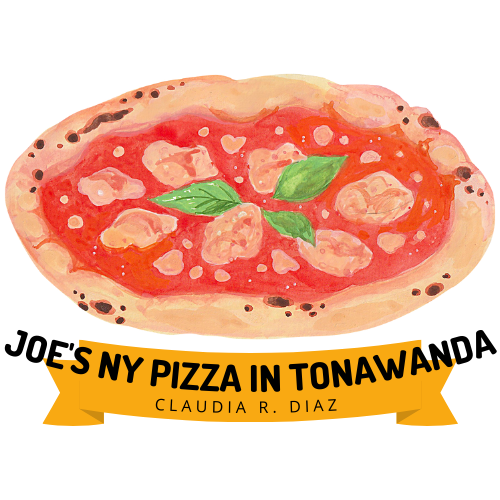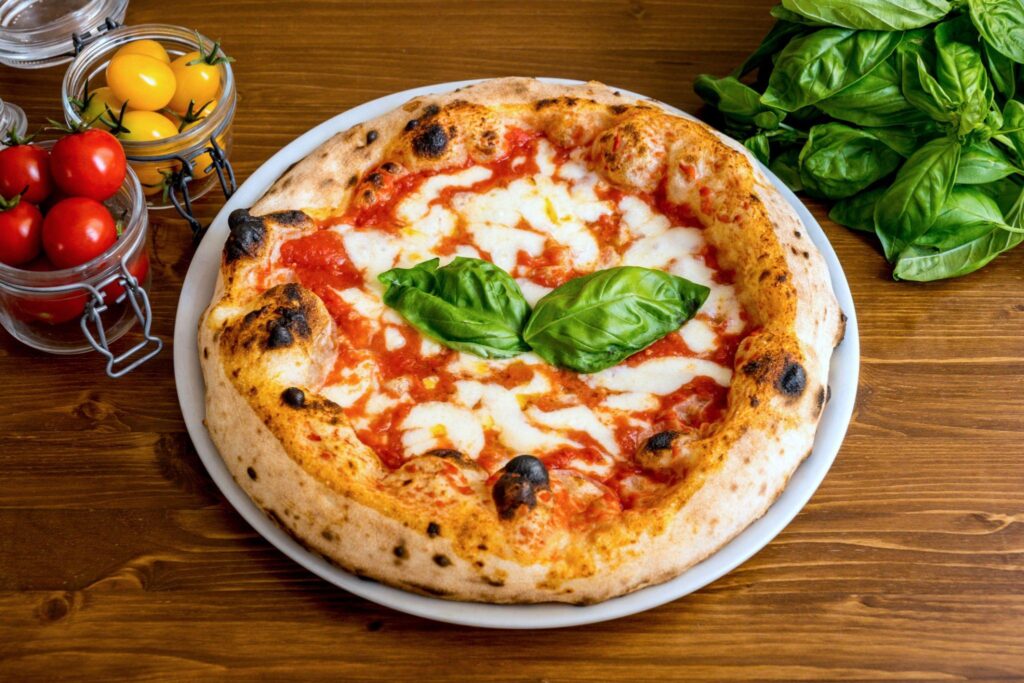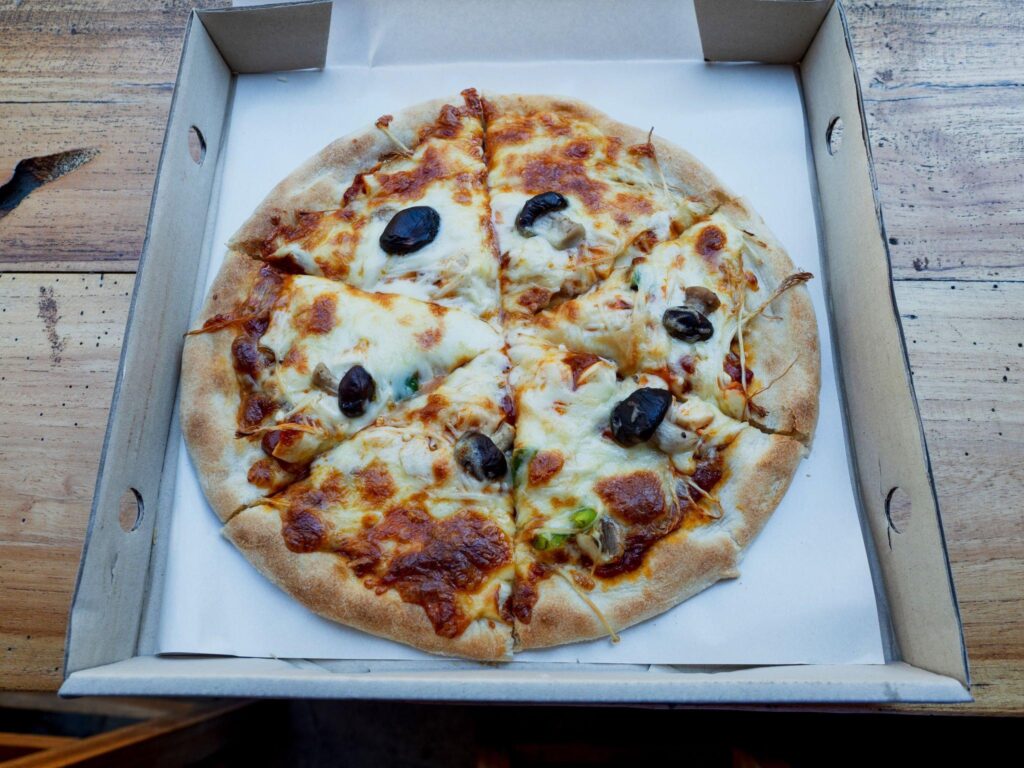Introduction
Pizza has long been a beloved food around the world. Its combination of crispy crust, gooey cheese, and flavorful toppings has made it a go-to choice for many. However, there is a common belief that pizza is a calorie bomb that leads to weight gain. In this article, we will explore the popularity of pizza and debunk the myth that pizza alone is responsible for making you fat.
Does Pizza Make You Fat?
Pizza’s popularity can be attributed to its delicious taste, versatility, and convenience. It originated in Italy but has become a global phenomenon. From its humble beginnings as a street food in Naples, pizza has now become a staple in many households and restaurants worldwide. Its different variations, such as thin crust, deep-dish, and gluten-free options, cater to various preferences and dietary restrictions.
The wide availability of pizza delivery services and affordable prices also contribute to its popularity. Pizza has become synonymous with social gatherings, parties, and even quick meals during busy times. Its comfort food status makes it a favorite among people of all ages.
Debunking The Myth Of Pizza Making You Fat
While it is true that some pizzas can be high in calories, it is important to note that pizza alone does not make you fat. Weight gain occurs when you consume more calories than your body needs over an extended period. It is the overall balance of your diet and lifestyle that determines your weight.
Pizza can be part of a balanced diet when consumed in moderation and combined with other nutritious foods. Opting for healthier pizza toppings like vegetables, lean proteins, and whole wheat crust can make it a more nutritious choice. Portion control is also crucial. Enjoying a slice or two alongside a salad or other healthy dishes is a sensible approach.
It is worth mentioning that engaging in regular physical activity and maintaining a healthy lifestyle are key factors in weight management. By incorporating exercise and making mindful food choices, you can still enjoy pizza without compromising your health or weight goals.
In conclusion, pizza’s popularity extends far beyond its perceived reputation as a high-calorie food. By debunking the myth that pizza alone makes you fat and adopting a balanced approach to nutrition and lifestyle, you can indulge in this delicious treat without guilt.
Understanding Calories In Pizza
The Calorie Content Of Different Pizza Types
When it comes to pizza, one of the most important factors to consider is the calorie content. The number of calories in a pizza can vary based on many factors, including the type of crust, toppings, and portion size.
Thin-crust pizzas tend to have fewer calories compared to thick or deep-dish crusts. This is because thin crusts are generally made with less dough, resulting in a lower calorie count. However, it is essential to note that this can also depend on the size of the pizza slice.
Toppings also play a significant role in the calorie count of a pizza. Classic cheese and tomato sauce pizzas typically have fewer calories compared to meat-heavy pizzas or those loaded with extra cheese. Vegetables like mushrooms, bell peppers, and onions are lower in calories compared to fatty toppings like pepperoni or sausage.
Portion size is another crucial factor to consider. A large pizza slice naturally contains more calories than a smaller slice. It’s essential to be mindful of portion sizes if you are watching your calorie intake.
Factors That Contribute To The Calorie Count In Pizza
Besides the type of crust and toppings, there are other factors that can contribute to the calorie count in pizza.
- Cheese: Cheese is a significant source of calories in pizza. Opting for lower-fat cheese or reducing the amount of cheese can help reduce the overall calorie content.
- Sauces: Cream-based sauces or those with added oils and sugars can increase the calorie content. Choosing lighter sauces like tomato-based or pesto sauces can help reduce calorie intake.
- Preparation methods: Certain preparation methods, such as deep-frying or adding extra oil during cooking, can increase the calorie content. Opting for baked or grilled pizzas can help reduce calorie intake.
- Crust size: The size of the pizza crust also affects the calorie count. Thin crusts typically have fewer calories compared to thick or stuffed crusts.
It’s important to note that while pizza can be high in calories, it can still be enjoyed as part of a balanced diet. Making mindful choices about the type of crust, toppings, and portion size can help you enjoy pizza without going overboard on calorie intake. Moderation is key when it comes to indulging in your favorite pizza treats.
Pizza And Weight Gain
When it comes to the connection between pizza and weight gain, many people wonder if indulging in this popular food can really make you fat. Let’s explore the relationship between pizza consumption and weight gain, as well as the importance of moderation when enjoying this delicious treat.
The Relationship Between Pizza Consumption And Weight Gain
Pizza is often associated with being high in calories, unhealthy fats, and carbohydrates. It’s true that certain types of pizza, especially those loaded with greasy toppings and excessive cheese, can contribute to weight gain if consumed in large amounts and on a regular basis.
The calorie content of pizza can vary depending on the size, toppings, and crust type. On average, one slice of pizza can range from 200 to 400 calories or more. If you consume several slices along with sugary beverages or sides like breadsticks, the calories can add up quickly.
Moreover, eating pizza frequently without considering portion control and overall dietary balance can lead to a calorie surplus, which can contribute to weight gain over time. It’s important to keep in mind that weight gain is a result of consuming more calories than your body needs, regardless of the specific food.
How Moderation Is Key When Enjoying Pizza?
Enjoying pizza doesn’t mean you have to give up on your health and fitness goals. The key is moderation. Here are a few tips to help you enjoy pizza without it negatively impacting your weight:
- Choose healthier options: Opt for thin-crust pizzas with plenty of vegetable toppings and lean proteins. This can help lower the calorie content and increase the nutritional value of your pizza.
- Watch your portion sizes: Instead of devouring an entire pizza, limit yourself to one or two slices and pair it with a side salad or some steamed vegetables. This can help control your calorie intake while still satisfying your pizza craving.
- Balance your overall diet: If you enjoy pizza occasionally, make sure to balance your other meals with nutrient-dense foods like fruits, vegetables, whole grains, and lean proteins. This can help maintain a healthy overall diet and offset any indulgences.
Remember, pizza can be a part of a balanced diet and a healthy lifestyle. Enjoying it in moderation and making smart choices can help you satisfy your cravings without compromising your weight goals.
In conclusion, pizza alone does not make you fat, but consuming excessive amounts and neglecting portion control can contribute to weight gain. By practicing moderation and making healthier choices, you can still enjoy pizza while maintaining a healthy weight.
Making Healthier Pizza Choices
When it comes to pizza, there is a common misconception that it inevitably leads to weight gain and poor health. However, with the right choices and a mindful approach, pizza can actually be part of a balanced and nutritious diet. In this article, we will explore some tips for making healthier pizza at home and how to navigate healthier options when ordering pizza.
Tips For Making Nutritious Pizza At Home
- Choose Whole-Wheat Crust: Opting for whole-wheat crust adds fiber and nutrients to your pizza. It can help you feel fuller for longer and support healthy digestion.
- Load Up on Veggies: Use a variety of colorful vegetables as toppings. These will provide essential vitamins, minerals, and antioxidants while reducing the calorie and fat content of your pizza.
- Go Light on Cheese: Cheese is delicious, but it can also contribute to high calorie and fat intake. Use a moderate amount of cheese, or try using a combination of lower-fat cheeses like mozzarella or feta.
- Include Lean Proteins: Add lean proteins such as grilled chicken, turkey, or tofu to your pizza. This will boost its nutritional value and provide satiety.
- Control Portion Sizes: Pay attention to your portion sizes to avoid overindulging. A single slice can be satisfying when paired with a side salad or some fruit.
How To Navigate Healthier Options When Ordering Pizza?
- Look for Thin Crust: Thin crust pizzas tend to be lower in calories compared to thicker crust options. They also provide a crispier texture, which can be equally delicious.
- Opt for Veggie Toppings: Choose vegetable-packed pizzas with ingredients like mushrooms, bell peppers, spinach, and onions. This will boost the nutritional value and lower the calorie content.
- Ask for Light Cheese: If you’re ordering from a restaurant, request light cheese or extra cheese on the side. This allows you to control the amount of cheese and reduce the overall calorie and fat intake.
- Select Leaner Proteins: If you prefer meat toppings, opt for lean proteins like grilled chicken or turkey instead of higher-fat options such as pepperoni or sausage.
- Consider Customization: Many pizza places offer customization options. Take advantage of this opportunity to choose healthier ingredients, such as whole-wheat crust, reduced-fat cheese, and plenty of veggies.
By following these tips and making conscious choices, you can enjoy pizza without compromising your health goals. Remember, moderation is key, and incorporating a variety of nutritious foods alongside your pizza can help maintain a balanced diet. So go ahead and savor a slice of pizza guilt-free!
The Role Of Portion Control
Understanding Portion Sizes When Eating Pizza
Pizza is a beloved food enjoyed by many around the world. However, the question of whether pizza can contribute to weight gain arises due to its calorie content. The role of portion control when eating pizza cannot be emphasized enough.
While pizza itself is not inherently unhealthy, the amount and type of toppings can greatly affect its nutritional value. Understanding portion sizes is crucial to managing calorie intake. A typical serving size of pizza is often defined as one slice. However, it’s important to note that not all pizza slices are created equal. A large slice of deep-dish pizza will contain more calories than a small, thin-crust slice.
Strategies For Portion Control To Prevent Overconsumption
To prevent overconsumption of calories when indulging in pizza, here are some strategies for effective portion control:
- Choose thin-crust or vegetable-based pizzas: Opt for thin-crust pizzas as they generally have fewer calories than deep-dish or stuffed crust varieties. Additionally, consider vegetable toppings such as mushrooms, peppers, and spinach, which are lower in calories compared to fatty meats like pepperoni or sausage.
- Split with a friend: Sharing a pizza with a friend or loved one can help reduce your portion size and overall calorie intake. This way, you can still enjoy your favorite food while being mindful of your health goals.
- Add a side salad: Pairing your pizza with a side salad can provide extra fiber and nutrients while helping to fill you up. This can prevent overeating and contribute to a more balanced meal.
- Practice mindful eating: Pay attention to your body’s hunger and fullness cues. Slow down when eating and savor each bite, allowing yourself to enjoy the flavors fully. This can help prevent mindless overeating.
Remember, occasional indulgence in pizza is fine as part of a balanced diet. It’s all about moderation and making mindful choices to maintain a healthy lifestyle.
Balancing Pizza In A Healthy Diet
Pizza is a beloved food that often gets a bad reputation when it comes to health and weight gain. However, with the right approach, you can enjoy pizza as part of a balanced meal plan without sacrificing your health goals. In this article, we will explore how you can incorporate pizza into a healthy diet and provide some tips for enjoying it while maintaining a healthy lifestyle.
Incorporating Pizza Into A Balanced Meal Plan
It’s important to remember that pizza can be a part of a healthy diet when consumed in moderation and with the right choices. Here are some tips for incorporating pizza into your meal plan:
- Choose a healthier crust: Opt for whole grain or thin crust options instead of thick or deep-dish crusts, which tend to be higher in calories and carbohydrates. Whole grain crusts provide more fiber, vitamins, and minerals.
- Load up on vegetables: Choose pizzas with a variety of vegetables as toppings. Vegetables add essential nutrients, fiber, and volume to the meal, reducing the portion of high-calorie ingredients like cheese and meat.
- Watch portion sizes: Stick to one or two slices of pizza and pair it with a side salad or vegetable dish. This helps control calorie intake while increasing the nutritional value of the meal.
- Be mindful of toppings: Opt for lean proteins like grilled chicken or shrimp instead of fatty meats like sausage or pepperoni. Choose lighter cheese options such as part-skim mozzarella or feta instead of heavy cheeses like cheddar or provolone.
Tips For Enjoying Pizza While Maintaining A Healthy Lifestyle
While enjoying pizza, it’s essential to balance your overall diet and lifestyle. Here are some tips for doing so:
- Practice portion control: Enjoy a smaller portion of pizza and pair it with a side of salad or steamed vegetables for a well-rounded meal.
- Become an active pizza lover: Engage in regular physical activity to burn calories and maintain a healthy weight. Exercise can help offset the occasional indulgence in pizza.
- Make smart choices: When dining out, look for pizzerias that offer healthier options and customization. Ask for less cheese, more vegetables, and lean protein toppings.
- Balance your meals: Enjoying pizza occasionally is fine as long as you make healthier choices for your other meals. Include plenty of fruits, vegetables, lean proteins, and whole grains in your diet.
By following these tips and being mindful of your choices, you can enjoy pizza as part of a balanced meal plan without compromising your health goals. Remember, it’s all about moderation, portion control, and making smart choices to maintain a healthy lifestyle.
FAQ: Does Pizza Make You Fat?
Q: Will eating pizza make you fat?
A: Eating pizza in moderation and according to your dietary needs will not make you fat. However, consuming excessive amounts of pizza can lead to weight gain over time due to the high-calorie content.
Q: Can pizza fit into a balanced meal plan?
A: Yes, one or two slices of pizza can be part of a nutritious, balanced meal. It’s important to be mindful of portion sizes and not overindulge to avoid consuming too many calories.
Q: How many calories are in a typical pizza?
A: The number of calories in a pizza can vary significantly depending on its size, toppings, and crust thickness. On average, a 14-inch pizza can contain around the amount of calories a person should consume in an entire day.
Q: How can I make pizza more nutritious?
A: To make pizza more nutritious, consider opting for a thin-crust pizza instead of a deep-dish and skipping stuffed crusts and dipping sauces. Additionally, choosing vegetable toppings and being mindful of cheese intake can help improve the nutritional value.
Q: Will eating one slice of pizza affect my weight?
A: If you are generally healthy, enjoying an occasional slice of pizza, such as a slice of pepperoni pizza, will not significantly impact your weight. The short-term weight gain would be limited to the actual weight of the pizza itself.
Q: Should individuals with certain health conditions avoid pizza?
A: Individuals with unhealthy lipid levels, high blood pressure, diabetes, insulin resistance, heart disease, obesity, or who smoke should be cautious with their pizza consumption. It is advised to opt for veggie-heavy slices and those with lighter cheese toppings. Consulting with a healthcare professional is recommended for those with specific health concerns.
Conclusion
In conclusion, pizza itself is not solely responsible for weight gain or making you fat. The impact of pizza on weight largely depends on the choices you make and how you incorporate it into your overall diet and lifestyle. While some pizzas can be high in calories and unhealthy ingredients, there are also healthier alternatives available.
Final Thoughts On The Impact Of Pizza On Weight
It’s essential to consider portion sizes, toppings, and crust options when enjoying pizza. Opting for thin crust, whole wheat, or cauliflower crusts can help reduce calorie intake. Choosing healthier toppings, such as vegetables and lean proteins, can also make a significant difference in the overall nutritional value of your pizza.
Additionally, it’s important to be mindful of your overall calorie intake and balance it with physical activity. Incorporating regular exercise and maintaining a balanced diet that includes a variety of nutritious foods can help offset any potential negative impacts of enjoying pizza.
Balancing Indulgence And Moderation For A Healthy Relationship With Pizza
While it’s okay to indulge in pizza occasionally, it’s crucial to practice moderation and make informed choices. Portion control and being aware of the nutritional content can help you enjoy pizza without compromising your health and weight management goals.
It’s also worth noting that pizza can be an enjoyable part of a balanced diet when paired with other nutritious foods. By including a variety of fruits, vegetables, whole grains, and lean proteins in your meals, you can create a well-rounded eating plan that accommodates occasional pizza consumption.
Ultimately, the key is to have a healthy relationship with food, including pizza. Enjoying it in moderation, being mindful of your choices, and embracing a balanced approach to nutrition and physical activity are the foundations for maintaining a healthy weight and overall well-being.
So go ahead and savor that slice of pizza guilt-free, as long as it’s part of a well-balanced diet and an overall healthy lifestyle.

Looking for delicious pizza and authentic Italian cuisine? Look no further than Claudia R. Diaz at Joe’s NY Pizza in Tonawanda! Our menu features a wide variety of classic dishes and innovative creations, all made with the freshest ingredients and prepared with the utmost care. Whether you’re in the mood for a traditional Margherita pizza or something a little more adventurous, like our Buffalo chicken pizza or shrimp scampi pasta, Claudia R. Diaz has something to satisfy every craving. So why wait? Visit us today and experience the best Italian food in Tonawanda! #ClaudiaRDiaz #JoesNYPizzaTonawanda #ItalianFood #PizzaLovers #FoodiesUnite



